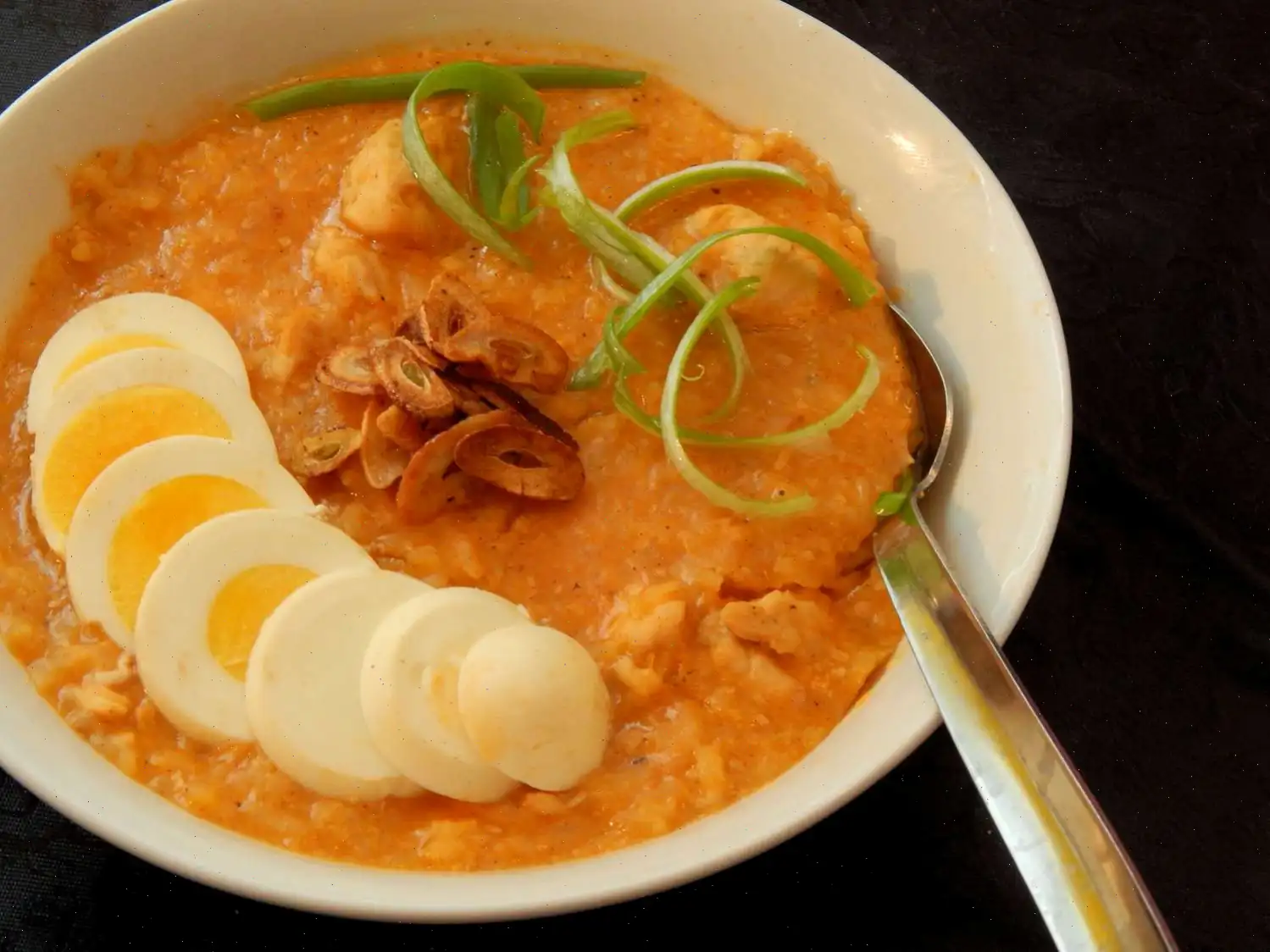
Filipino Pork Adobo Recipe
Ingredients
- 1 cup distilled white vinegar
- 1 cup soy sauce
- cup ketchup
- 1 tablespoon minced garlic
- 3 bay leaves
- 1 teaspoon freshly ground black pepper
- 2 pounds lean pork, cut into 1-inch cubes
- 1 pound small green beans, trimmed (optional)
Directions
Step 1: In a large saucepan, combine the vinegar, soy sauce, ketchup, garlic, and bay leaves. Stir well to mix all the ingredients.
Step 2: Add the cubed pork to the saucepan, then bring the mixture to a boil over high heat.
Step 3: Once it reaches a boil, reduce the heat to medium-low. Cover the saucepan and let it simmer, stirring occasionally, until the pork becomes tender. This will take about 2 hours.
Step 4: If you are adding green beans, incorporate them into the pot during the last half hour of cooking. This will allow them to cook through without becoming overcooked.
Nutrition Facts (per serving)
| Calories | 337 |
| Total Fat | 16g (20% Daily Value) |
| Saturated Fat | 6g (29% Daily Value) |
| Cholesterol | 90mg (30% Daily Value) |
| Sodium | 2687mg (117% Daily Value) |
| Total Carbohydrates | 14g (5% Daily Value) |
| Dietary Fiber | 3g (11% Daily Value) |
| Total Sugars | 6g |
| Protein | 35g (70% Daily Value) |
| Vitamin C | 17mg (18% Daily Value) |
| Calcium | 68mg (5% Daily Value) |
| Iron | 3mg (17% Daily Value) |
| Potassium | 757mg (16% Daily Value) |
* Percent Daily Values are based on a 2,000 calorie diet. Your daily values may vary depending on your calorie needs. ** Nutrient information is not available for all ingredients. Amount is based on available data.
If you are following a medically restrictive diet, please consult your doctor or registered dietitian before preparing this recipe for personal consumption.

History of Filipino Pork Adobo
Filipino Pork Adobo is one of the most iconic dishes in the Philippines. Adobo, a term that translates to "marinade" in Spanish, was influenced by the Spanish colonization in the 16th century. The dish itself, however, is deeply rooted in pre-colonial Filipino cooking traditions. The indigenous Filipino people would preserve meat by marinating it in vinegar and salt, techniques that were later combined with spices and soy sauce under Spanish influence. Today, Filipino adobo is a rich, flavorful braised dish that represents the essence of Filipino home cooking, with pork being one of the most common meats used.
Regional Variations of Adobo
Though Filipino Pork Adobo is loved throughout the entire country, there are significant regional differences in how it is prepared. For example, in the northern regions, adobo is made with less soy sauce and uses a higher proportion of vinegar, creating a tangier flavor. In contrast, southern regions like Batangas and Quezon tend to use coconut milk in their adobo, creating a creamier, richer version. Additionally, adobo is often cooked with local vegetables like potatoes, carrots, or green beans, depending on the area. While pork is the most common meat for adobo, variations with chicken, beef, and even seafood are also popular.
What Makes Filipino Pork Adobo Unique?
Unlike other stews or braised dishes from around the world, Filipino Pork Adobo is unique due to its use of vinegar and soy sauce as the main seasoning components. This results in a distinctive balance of tangy, savory, and slightly sweet flavors. Some versions of adobo also incorporate ingredients like garlic, bay leaves, and peppercorns, all of which enhance the dish's complexity. In contrast, other braised dishes in different cultures may rely on ingredients like tomatoes or stock for flavoring, making adobo stand out for its simple yet robust taste.
Where Is Filipino Pork Adobo Usually Served?
Adobo is typically served in Filipino households and at family gatherings as a main dish, often paired with white rice to soak up the rich sauce. It is a common feature at special occasions and fiestas, as well as an everyday meal enjoyed by Filipinos across the world. The dish has also gained popularity in international Filipino restaurants, where it is often served alongside other traditional dishes like lumpia (spring rolls) or pancit (noodles). In addition, it is a common comfort food in many Filipino-American households, often made in large batches for family dinners.
Interesting Facts About Filipino Pork Adobo
- Adobo was one of the first Filipino dishes to be recognized internationally and has been featured in numerous food magazines and cooking shows.
- In the Philippines, adobo is often said to taste better the next day, as the flavors continue to develop and deepen after being stored in the refrigerator overnight.
- Some variations of adobo also include the use of Filipino banana ketchup, a sweet and tangy condiment that is unique to Filipino cuisine.
- There is no one "authentic" recipe for adoboeach family and region has its own take on the dish, making it a truly customizable dish based on personal taste and local availability of ingredients.
FAQ about Filipino Pork Adobo Recipe
Comments
Linda Harris
11/03/2024 08:07:07 AM
I was born, raised, and still reside in the Philippines. While there are numerous regional versions of adobo here, I have never come across one that includes catsup. Some of the reviewers were correct - the dish is overly salty. It would be advisable to reduce or eliminate the added salt. The ideal ratio of vinegar to soy sauce is 1/2 cup vinegar to 1/4 cup Filipino soy sauce (I highly recommend the Silver Swan brand if available in the States). I personally find that the bay leaves can be overpowering; one or two leaves would suffice. It is customary to use whole peppercorns, and for a richer and thicker sauce, adding pork liver (cut into 1-inch by 2-inch pieces) is recommended. I prefer to add more garlic than the recipe suggests. Traditionally, adobo does not incorporate vegetables into the meat; vegetables are served as side dishes to complement the dish.
Jennifer Flores
01/21/2025 02:56:35 AM
Revised review: Does the recipe require tomato ketchup or the Filipino banana-based ketchup? I'm not a fan of the tomato taste in this dish. Additionally, there's an excessive amount of vinegar and soy sauce in this recipe for my liking. I'd prefer using 1/2 cup of vinegar and 1/4 cup of soy sauce instead.
Diane Edwards
02/15/2024 09:19:57 PM
Having been brought up on Filipino cuisine, I approached this recipe with an open mind, despite its deviation from the traditional flavors of adobo. Regrettably, I must say that this dish falls short of authenticity. While I strive to find something positive in my reviews, the considerable time, resources, and energy I invested in preparing this meal leave me with no choice but to suggest its removal from the site.








